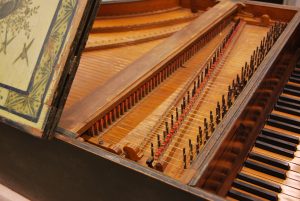In 1799, the British translated a foreign military manual by “a German Officer.” The German officer in question was Baron Francis de Rottenburg who originally published a manual in 1791. That manual provides the following music for Cease Firing.

In 1800, Hyde published A New and Complete Preceptor for the Trumpet and Bugle Horn. The following call for Skirmishers Cease Firing was provided for the Cavalry

Captain T.H. Cooper published A Practical Guide for the Light Infantry Officer in 1806. He provided the following version of a bugle call for Cease Firing. This is the same as the earlier German call from Rottenburg, but without the repeat (although it very likely would be repeated in the field).

Campbell’s Instructions to Light Infantry and Riflemen (1813) reused the Rottenburg Cease Firing. This call was also repeated by Major General Henry Torrens in Field Exercise and Evolution of the Army (1824).
Next, music from the 1863 Regulations for the Movements and Formations of a Division or Brigade of Cavalry, by the Horse Guards. While the majority of cavalry calls in that manual were written for cavalry trumpet, the call for Cease Fire (below) is from a section of Field Sounds for Bugle in Bb.

Next, we have the 1886 Trumpet and bugle sounds for all branches of the Army, by the Horse Guards. This is effectively the same music, but at a different tempo. The older 1863 version would have taken about 21 seconds to sound. The 1886 version would be complete in about 4 seconds. This annotation, however, clearly shows that the 1863 and 1886 bugle calls are derived from Hyde’s 1800 bugle call for skirmishers.

This bugle call shows up again in the 1895 Trumpet and Bugle Sounds for the Army, published by the War Office. The version for the Mounted Corps is the same as above (1886). But a very different version for Dismounted Corps is also provided. This seems to harken back to Rottenburg’s (and Cooper’s) version for Light Infantry from 1799 and 1806-1824.

The signal for Cease Firing would change again. Shown here is the music from the 1914 Trumpet and Bugle Sounds for the Army. This is most likely the version that would still be in use at the Armistice that ended WWI. This signal is annotated as a field call for both the Mounted Corps and the Infantry.

The time signature and tempo were updated in the 1966 version of Trumpet and Bugle Calls for the Army. This is only a change in annotation and has no practical effect on the music.


